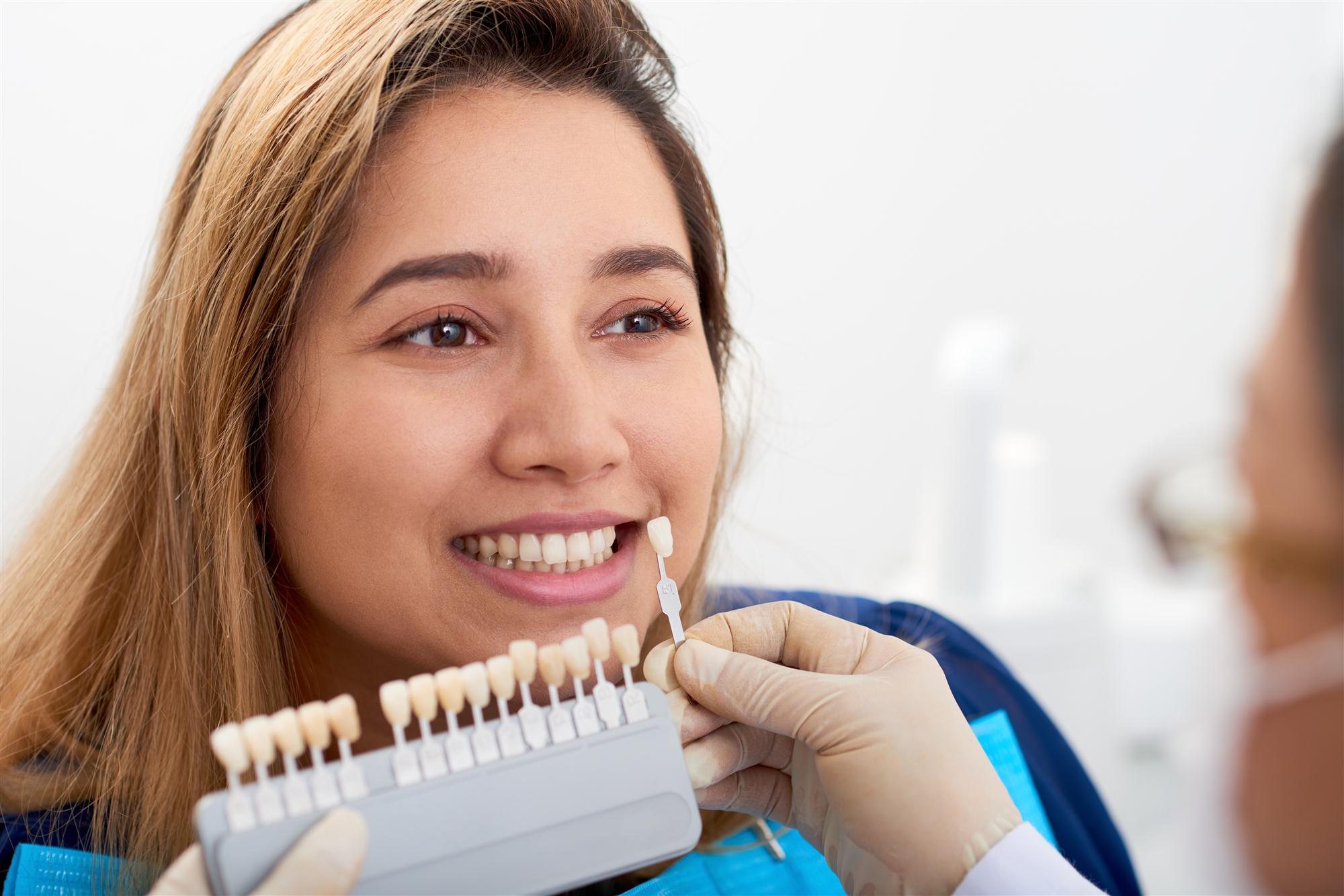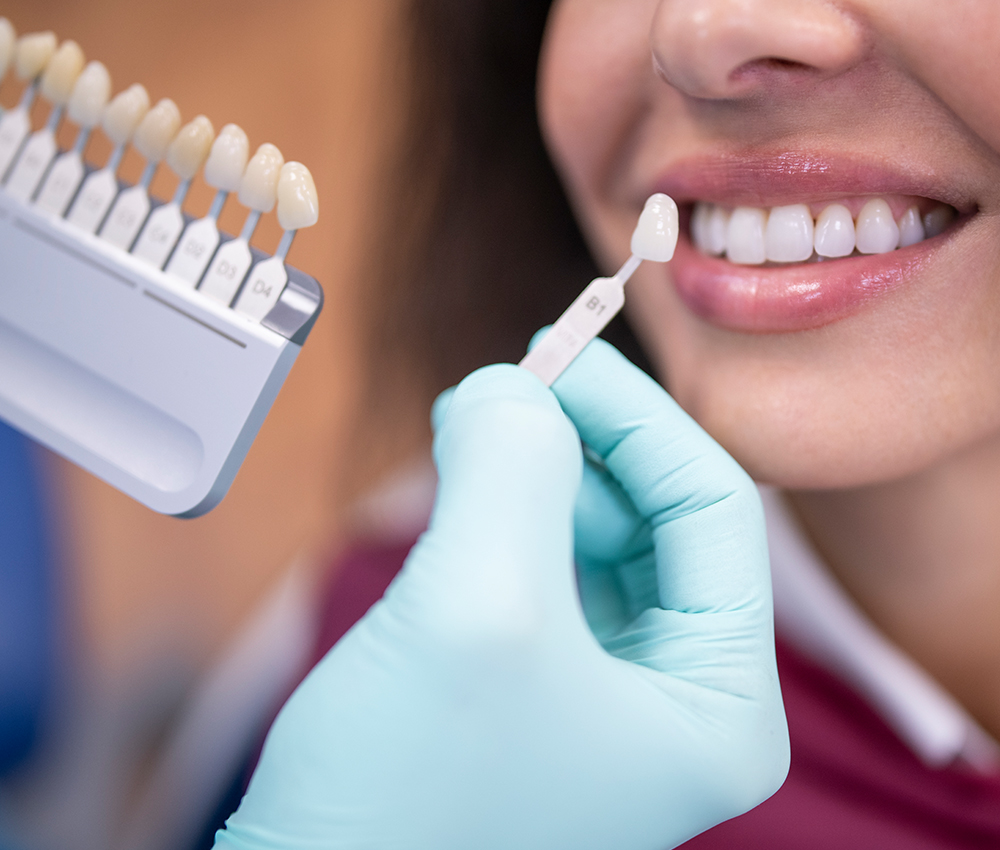Dental Veneers in Wisconsin
Porcelain and composite dental veneers are a cosmetic solution for stained, chipped or cracked teeth. They can fix cosmetic issues with a single tooth or transform your entire smile.
What are the Benefits of Dental Veneers?
- They provide a natural tooth appearance.
- Gum tissue responds well to porcelain.
- Veneers are stain-resistant.
- They are a less invasive approach to changing the color and shape of a tooth.
- Veneers are great when you only want to cover the front surface of the tooth.
Types of Veneers
|
| Porcelain Veneers |
Porcelain is the most popular and durable veneer material. Porcelain veneers are also stain-resistant. |
| Composite Veneers |
Made using composite resin and colored to be the same as standard tooth-colored fillings, composite veneers are not quite as strong as porcelain and may stain over time. |
| Lumineers |
A brand name of veneers that is placed over the enamel and made from thin layered porcelain with a shorter lifespan.
|
| Removable/Temporary Veneers |
A short term option not recommended for daily use that requires very little preparation. |
Dental Veneers vs. Crowns
Dental veneers and crowns both aim to improve smile aesthetics but in different ways. Veneers consist of thin covers placed over teeth to improve appearance with minimal tooth reduction, while crowns fully encapsulate damaged teeth to improve function and look. Crowns require significantly more natural tooth removal than veneers to properly fit over compromised teeth they aim to salvage. Both veneers and crowns can achieve gorgeous, transformative smiles, with veneers providing conservative aesthetic updates and crowns rebuilding and restoring severely decayed or fractured teeth.
Porcelain Veneers Procedure in Waukesha County
- The dentist examines your teeth to make sure that you are a good candidate for veneers. X-rays and impressions of your teeth can be taken depending on the case and your dental records.
- A model of the veneer is made using CEREC® CAM/CAD technology.
- To put on the veneer, enamel is removed from the tooth's surface. Usually, only about 1/2 a millimeter.
- When the veneer comes in from the lab, the dentist will try it out on your tooth to make sure it looks and feels natural.
- Cement is placed on the veneer, which is then attached to the tooth. A light beam that is applied to the veneer helps the cement dry quickly.
- Excess cement is removed and the dentist evaluates your bite to make sure that the tooth functions normally.

How Much Are Dental Veneers in Wisconsin?
Dental veneers in Wisconsin cost between $1,000 and $1,500 per tooth on average. The exact price depends on the type of veneer, how many teeth are treated and whether additional dental work is required.
Porcelain Veneers for Front Teeth
Front teeth are the most common area for porcelain veneers. In Wisconsin, the cost for veneers on front teeth often falls between $1,200 and $1,500 per tooth. The final price reflects the customization necessary for a natural look, custom-made to your smile.
Cost for Two Porcelain Veneers
Patients who need only two veneers, often on the front teeth, can expect a combined cost between $2,000 and $3,000. The per-tooth price may be slightly higher when fewer veneers are made compared to a larger treatment plan.
Veneer Costs With and Without Insurance
Most insurance plans classify porcelain veneers as cosmetic, so many patients pay out of pocket. Without insurance, porcelain veneers in Wisconsin typically range from $1,200 to $1,500 per tooth. If your plan provides limited coverage, your out-of-pocket cost may be reduced, depending on your benefits.
Composite vs. Porcelain Veneers
While composite veneers are a more affordable option, they do not last as long as porcelain. Porcelain offers greater durability and a more natural appearance, which makes it a preferred choice despite the higher upfront cost. For minor chips or cracks, dental bonding can also provide a budget-friendly alternative to veneers.
Meet your dentists Dr. Schaeffer, Dr. Goral & Dr. Whalen








